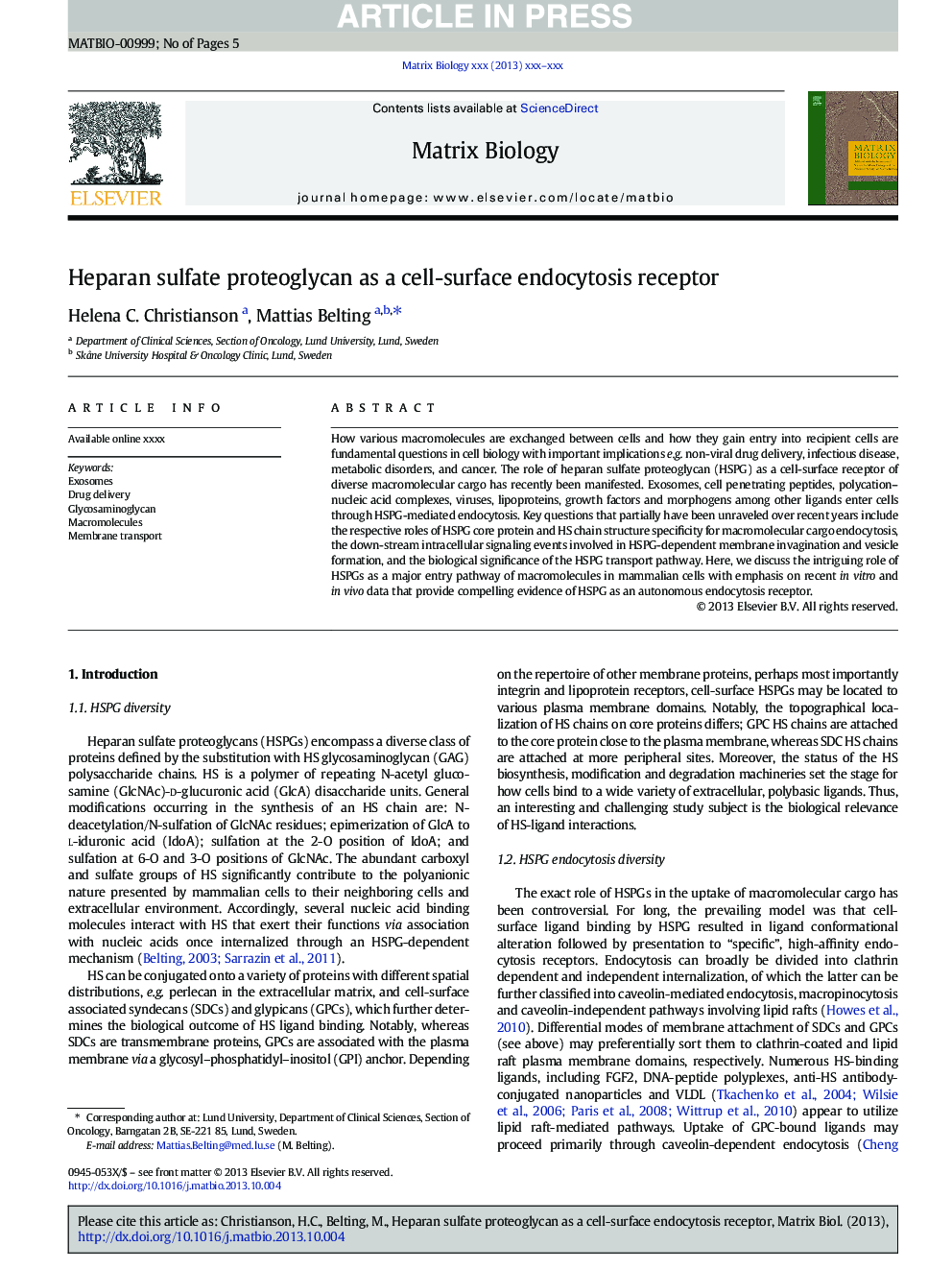| Article ID | Journal | Published Year | Pages | File Type |
|---|---|---|---|---|
| 8455318 | Matrix Biology | 2014 | 5 Pages |
Abstract
How various macromolecules are exchanged between cells and how they gain entry into recipient cells are fundamental questions in cell biology with important implications e.g. non-viral drug delivery, infectious disease, metabolic disorders, and cancer. The role of heparan sulfate proteoglycan (HSPG) as a cell-surface receptor of diverse macromolecular cargo has recently been manifested. Exosomes, cell penetrating peptides, polycation-nucleic acid complexes, viruses, lipoproteins, growth factors and morphogens among other ligands enter cells through HSPG-mediated endocytosis. Key questions that partially have been unraveled over recent years include the respective roles of HSPG core protein and HS chain structure specificity for macromolecular cargo endocytosis, the down-stream intracellular signaling events involved in HSPG-dependent membrane invagination and vesicle formation, and the biological significance of the HSPG transport pathway. Here, we discuss the intriguing role of HSPGs as a major entry pathway of macromolecules in mammalian cells with emphasis on recent in vitro and in vivo data that provide compelling evidence of HSPG as an autonomous endocytosis receptor.
Related Topics
Life Sciences
Biochemistry, Genetics and Molecular Biology
Cancer Research
Authors
Helena C. Christianson, Mattias Belting,
